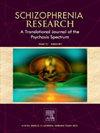Polygenic enrichment analysis in multi-omics levels identifies cell/tissue specific associations with schizophrenia based on single-cell RNA sequencing data
IF 3.6
2区 医学
Q1 PSYCHIATRY
引用次数: 0
Abstract
Objective
Understanding the specific cellular origin and tissue heterogeneity in schizophrenia is critically important for exploring the disease etiology. This study aims to investigate these aspects by performing multiple analyses based on omics data.
Method
We performed single-cell disease relevance score (scDRS) algorithm to link brain single-cell RNA sequencing (scRNA-seq) with schizophrenia risk across multi-omics scales at single-cell resolution. This approach identified cell types with overexpression of schizophrenia-related genes implicated by multi-omics panels (ATAC-seq, RNA-seq, TWAS, and GWAS). Schizophrenia-related genes from these multi-omics panels were extracted and combined with scRNA-seq data to calculate scDRS. Subsequently, the cell-type vs. disease association and tissue heterogeneity were assessed using scDRS for each omics panel.
Results
We identified two novel cell subpopulations in the brain that differentially express SCUBE3 (59 cells, 7.0 %) and FN1 (21 cells, 2.5 %). At the individual cell level, schizophrenia-associated cell subpopulations included microglial cell associated with ATAC-seq panel (Passociation = 0.002, Pheterogeneity = 0.009) and deep layer neuron suggestively associated with GWAS panel (Passociation = 0.033, Pheterogeneity = 0.017). At the brain tissue level, microglial cell was significantly associated with cortical plate in ATAC-seq panel (Passociation = 0.002, Pheterogeneity = 0.011). Gene level analysis identified several genes associated with schizophrenia across multi-omics panels.
Conclusions
Our study outlines the signature of cell subpopulations, brain regions, and disease risk genes in schizophrenia at single-cell resolution across multi-omics scales. These findings provide a reference for future precision medicine approaches targeting specific cell types and brain regions in schizophrenia.
求助全文
约1分钟内获得全文
求助全文
来源期刊

Schizophrenia Research
医学-精神病学
CiteScore
7.50
自引率
8.90%
发文量
429
审稿时长
10.2 weeks
期刊介绍:
As official journal of the Schizophrenia International Research Society (SIRS) Schizophrenia Research is THE journal of choice for international researchers and clinicians to share their work with the global schizophrenia research community. More than 6000 institutes have online or print (or both) access to this journal - the largest specialist journal in the field, with the largest readership!
Schizophrenia Research''s time to first decision is as fast as 6 weeks and its publishing speed is as fast as 4 weeks until online publication (corrected proof/Article in Press) after acceptance and 14 weeks from acceptance until publication in a printed issue.
The journal publishes novel papers that really contribute to understanding the biology and treatment of schizophrenic disorders; Schizophrenia Research brings together biological, clinical and psychological research in order to stimulate the synthesis of findings from all disciplines involved in improving patient outcomes in schizophrenia.
 求助内容:
求助内容: 应助结果提醒方式:
应助结果提醒方式:


